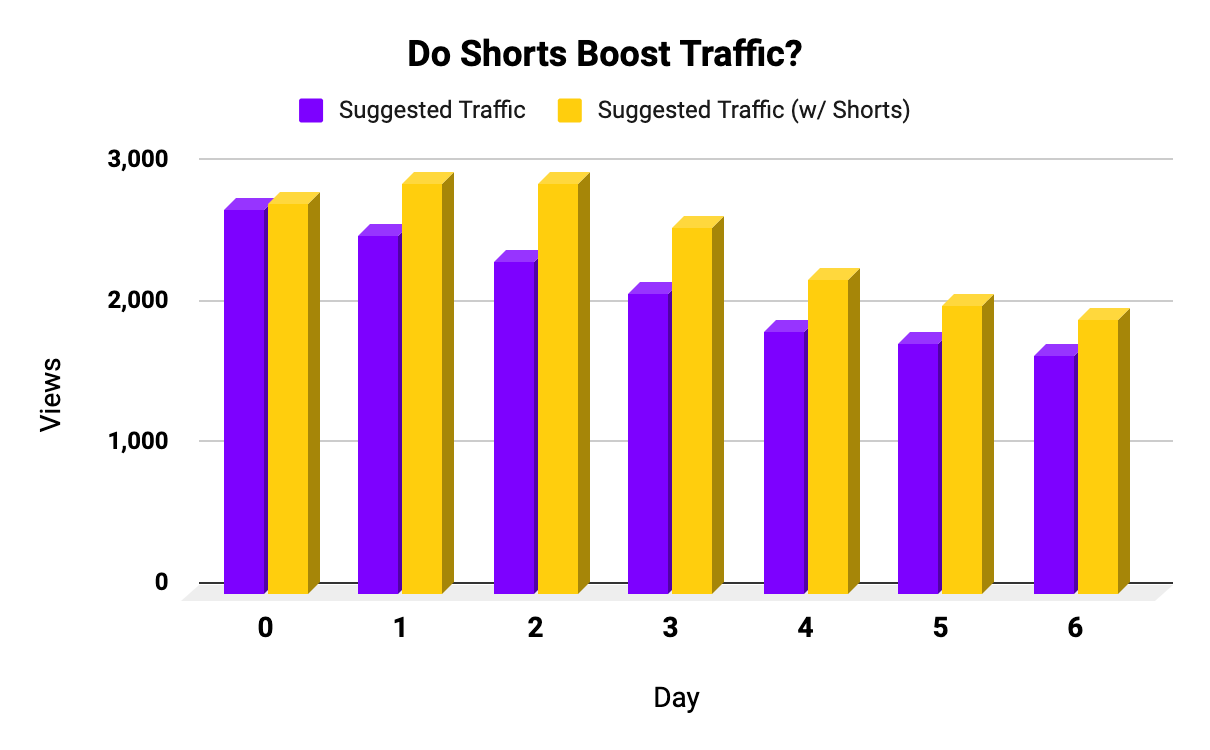Dear Creator Nation,
If anything, 2021 was the year of YouTube #shorts. Shorts are the Instagram stories of YouTube: quick, digestible, trendy videos that attract millions of users and countless hours of engagement. They’re YouTube’s attempt at replicating TikTok, the wildly popular short-video social network that was the most visited website in the world in 2021.
While arguably uninnovative, don’t count out YouTube’s effort to make a TikTok competitor out of Shorts. Last year they proved they’re putting their money where their mouth is: In May YouTube announced a $100 million YouTube Shorts Fund that will reward creators for contributing successful shorts. Their message: Yo TikTok, we’re coming for you 👀
Like health and wellness to athletes, shorts are now an undeniable piece of YouTube’s ecosystem that cannot be ignored by content creators. After accepting this reality, we were left stumped. Should all of our clients be incorporating Shorts into their feed? Are there any limitations to Shorts? Are Shorts a hype cycle or temporary fad?
As always, our calculator-brains clicked in and we started searching for evidence from the source we know best: data. By carefully analyzing our clients’ channel performances before and after integrating shorts, we realized that Shorts can be both good and bad for a YouTuber’s engagement. Here are the 2 most important things we learned:
Shorts Barely Generate Any Revenue But They Can Boost Overall Channel Traffic — First of all, the amount of money shorts generate is statistically insignificant compared to regular videos (I’m talking $10 vs. $1,000). The goal of shorts is not to make money but to bring in new audiences. Shorts can serve as a boost to channel traffic and help support regular videos’ performance after 3 days. This is likely driven by the higher visibility the overall channel gets, both from new audiences as well as consistent viewers visiting an extra time (over the course of a week) to watch the short.
We compared channel traffic for one of our clients before and after he started incorporating shorts into his content strategy:
For our client, ↑ shorts = ↑ overall engagement.
Shorts Can Also Distract Viewers — Shorts can act as a creative hack to draw users into your content ecosystem, but you need to be careful about shorts overload. Sometimes producing too many shorts can trigger YouTube to start recommending shorts over your revenue-generating traditional videos. One of our clients started releasing shorts like wildfire and then this happened to his click-through rate (CTR):
The algorithm started only recommending shorts to new viewers because they were clicked on more often by people visiting his channel. The more shorts that were consumed, the less viewers that translated into core subscribers.
Like everything in life, YouTube shorts are a double-edged sword. If you’re a YouTuber, Shorts can be an incredibly effective tool to reach new audiences. We recommend experimenting with shorts to see if they can have a positive impact on engagement for normal videos as well as subscriber growth. Start with one shorts a week and observe what happens. Up it to two if you see positive trends, and so on.
😴 TL;DR
YouTube Shorts are now a critical part of content strategy for YouTubers.
Shorts can often help YouTubers boost overall channel traffic.
Shorts are also a quick and efficient way to introduce your best content to new viewers.
BUT, sometimes Shorts can get in the way of your regular content.
YouTubers should experiment with Shorts to see what kind of an impact Shorts have on their unique channel.
🎥 Video of the Week — Types Of Cool Kids In School (#Shorts) by Luke Davidson
🍿 Youtuber: Luke Davidson
👀 Views: 241k
👍 Likes: 24k
💬 Comments: 779k
🔔 Subscribers: 4.7M
📋 Content for Creators:
🎬 Action Steps:
Think this would help a YouTuber or creator you know? Forward it to them!
Have a great rest of the week creators!
Sent with 💜,







